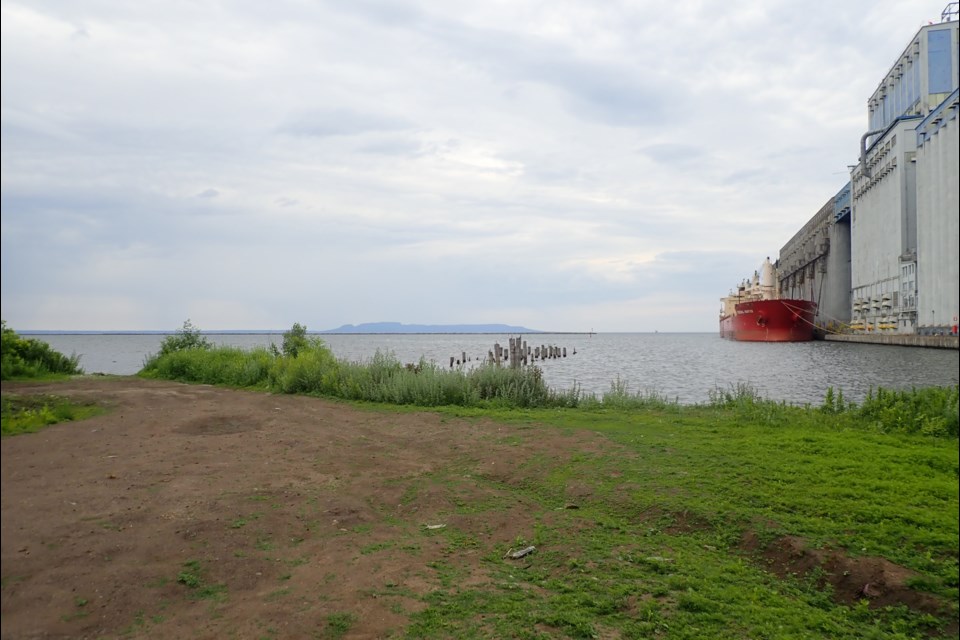THUNDER BAY — The federal government has announced over $600,000 in funding for projects that will rehabilitate Lake Superior in the Thunder Bay area.
Those leading remediation efforts say the investments are meaningful steps towards delisting Thunder Bay as an Area of Concern (AOC) in the Great Lakes, though much bigger spending will ultimately be required to achieve that goal.
Thunder Bay was designated as an AOC in 1987 under the Canada-U.S. Great Lakes Water Quality Agreement, reflecting impaired water quality tied primarily to years of pollution from pulp and paper mills.
Thunder Bay–Superior North MP Patty Hajdu announced funding through the federal Freshwater Action Plan to help address continuing concerns at Lakehead University on Tuesday.
“Unfortunately, the lake has seen a lot of abuse over decades and centuries of industrial activity,” she said in an interview. “It's exciting to see an announcement like this that will go to so many different groups that have real specific knowledge and tools to help the lake recover.”
The funding includes:
- $230,000 for Lakehead University to restore fish and wildlife habitat, and build features to filter stormwater
- $146,000 for the Bare Point Restoration Co. to design and start site preparation on an artificial wetland, and to restore a cold-water creek system near the former Superior Fine Papers site
- $108,500 for Lakehead to implement a wildlife habitat strategy for the Thunder Bay AOC
- $85,000 for the North Shore Steelhead Association to upgrade the Current River fish ladder
- $54,000 for the Lakehead Region Conservation Authority for invasive species management, riparian habitat rehabilitation, and new meadow habitat along the Neebing-McIntyre Floodway
- $40,000 for Fort William First Nation to naturalize and stabilize shoreline habitat by planting trees and shrubs in the Grand Point and the Kaministiquia River areas
Frank Edgson of the North Shore Steelhead Association said improving the fish ladder at the Boulevard Lake Dam will help the group understand and address low fish populations in the river.
“The population of rainbow trout doesn't seem to have developed as large as we would expect,” he said. “All the other rivers in Thunder Bay have healthy populations of rainbow trout. Current River is an unknown.”
“Long term, the end goal is a new fishery for the citizens of Thunder Bay – a healthy population of migratory species including rainbow trout and brook trout.”
The project will create subsurface openings in the ladder to let fish pass through more easily, and install equipment to track the number of fish using the structure.
Robert Stewart, an associate professor of geography and environment at Lakehead, said the funding will boost efforts to rehabilitate shorelines.
“It was a major wetland before industrial development,” he said. “It's a major transition zone that provides nutrients and life for food chains and systems that protect the lake as a whole.
“We tend to focus on the large lake out in the deep waters, but it's really that shoreline that provides these services.”
Stewart has been closely involved with the North Shore Remedial Action Plan (RAP), which coordinates efforts to remediate Areas of Concern including Thunder Bay.
The RAP reported last year over $165 million has been spent implementing remedial projects for the Thunder Bay AOC.
Those projects included adding secondary treatment at the Resolute pulp and paper mill and at Thunder Bay’s water pollution control plant, creating islands and rehabilitating habitat at the mouth of the McVicar Creek, and addressing beach closures.
When the AOC was designated nearly four decades ago, 10 of 14 “beneficial uses” — like fish and wildlife habitat, or quality drinking water — were considered impaired.
Now, only a handful (fish and wildlife populations, fish and wildlife habitat, and degradation of benthos) remained impaired, while two others (fish consumption restrictions and phytoplankton and zooplankton populations) require further assessment.
Tackling benthic mercury contamination in Thunder Bay’s north harbour, tied to pulp and paper mills, is the most significant remaining goal before the AOC could be delisted.
A plan to contain the contamination is estimated at over $65 million.
The remediation funding comes as companies eye Thunder Bay’s waterfront for a new industrial boom related to the lithium refining industry.
Hajdu said ensuring that development doesn’t leave another legacy of pollution will be a priority.
“My expectation is that every project will go through a vigorous environmental assessment,” she said.
“The very surface conversations I've had with people is that processing lithium is not as intensive a process as other minerals. But nonetheless, I think everybody expects us to do our full due diligence on any kind of industrial activity that could damage land or water.”
Stewart said the harbour’s past invites caution.
“I think we all acknowledge the place industry will have in Thunder Bay's working harbor,” he said. “But I encourage people, before we get too focused on the new development, to look at the last 30 years of legacy clean-up, the work we've had to do, the money we've had to spend.
“Until Thunder Bay is not an area of concern, I think we should be very careful about how we balance our industrial harbour with the ecosystem needs of Lake Superior.”
